If you’ve been out kayaking on the coast recently you are sure to have seen the spring bounty of jellyfish. In calmer bays and channels they may gather in the hundreds, clouding the water with their gently pulsating bells and trailing tentacles, or in open water you may catch sight of a pale mass sinking to the depths. In UK waters we have five common species that are easily distinguishable (moon, compass, lion’s mane, blue, barrel), plus another that may be seen along the warmer south-west coast called the mauve stinger.
Jellyfish are close relatives of sea anemones and corals who share the unique ability to bear stinging cells that are used for both prey capture and defence.
Here’s my quick identification guide to the UK’s five most popular species, and two non stinging pretenders …
Moon jellyfish
This one’s transparent with four pink rings – these are the gonads – this one has a very mild sting.
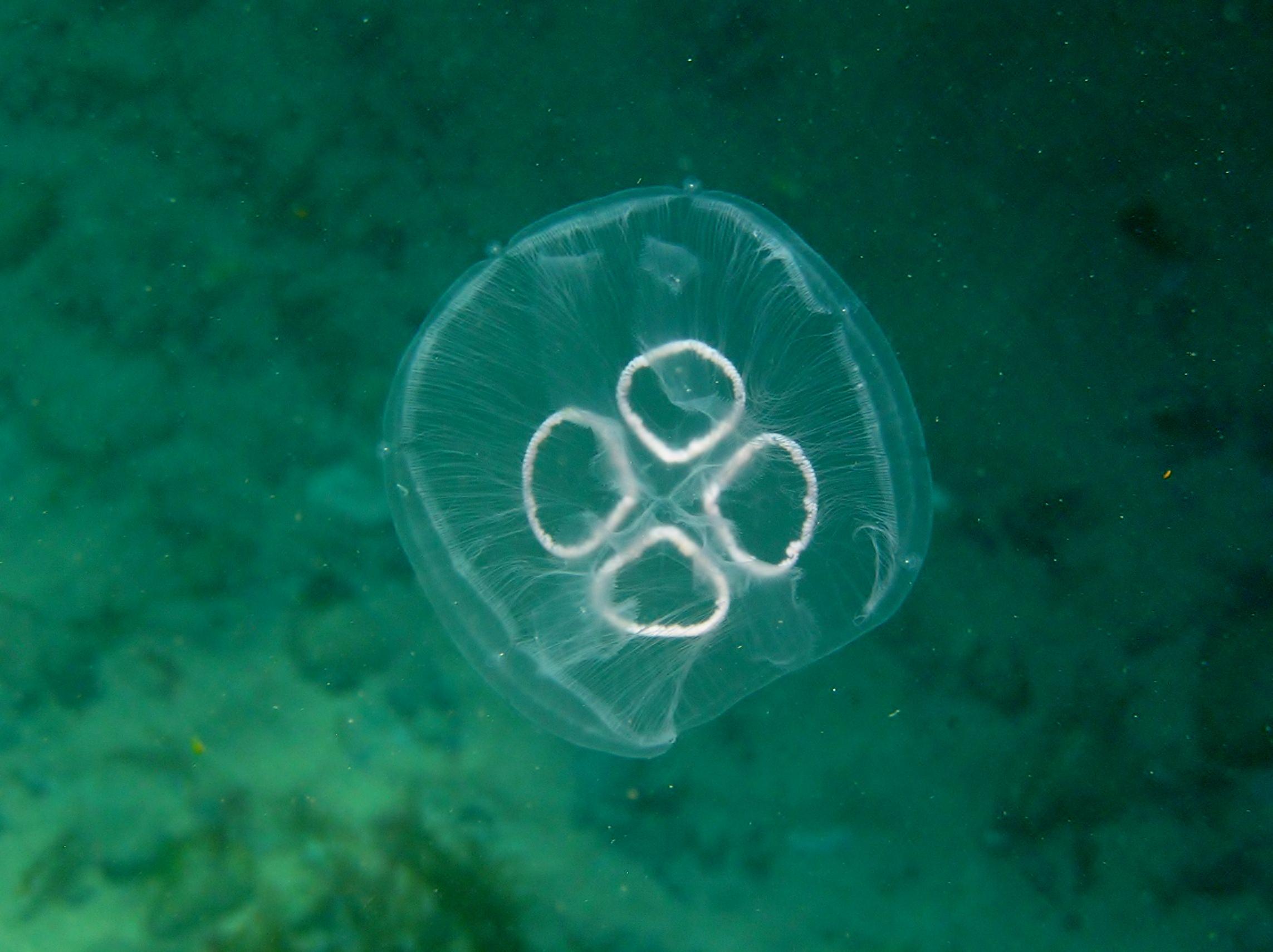
Compass jellyfish
Look for radiating brown lines that look like the points on a compass – painful sting.
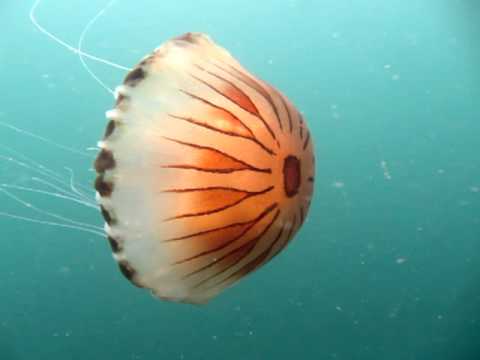
Lion’s mane jellyfish
These can grow vey large – up to 30 m long with a mass of shaggy brown tentacles and many long fine white tentacles – painful sting.
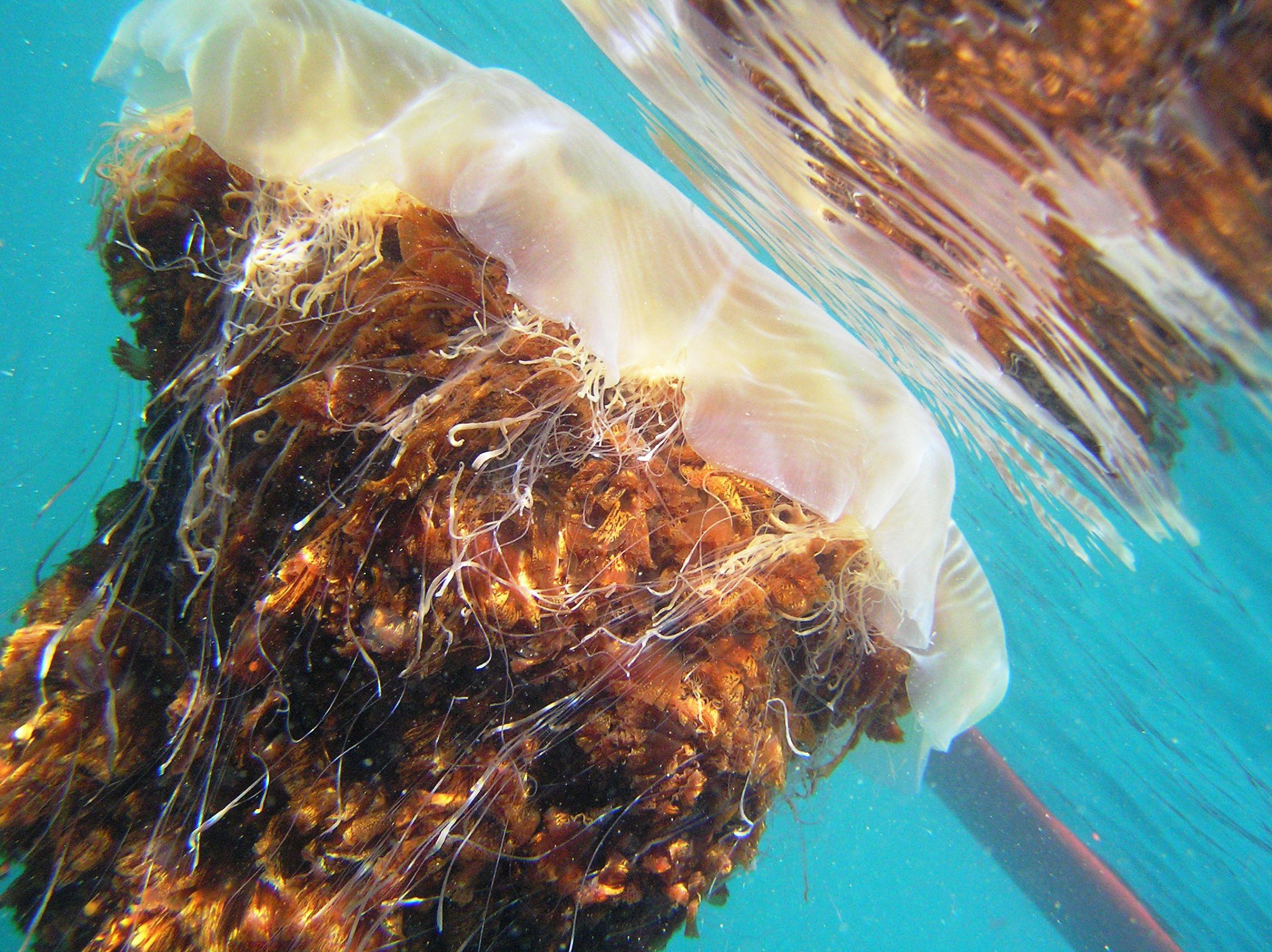
Blue jellyfish
These are bright blue, purple or pale coloured with many fine tentacles – mild sting.

Barrel jellyfish
These can be large, up to one metre across the bell with stout tentacles – mild sting.
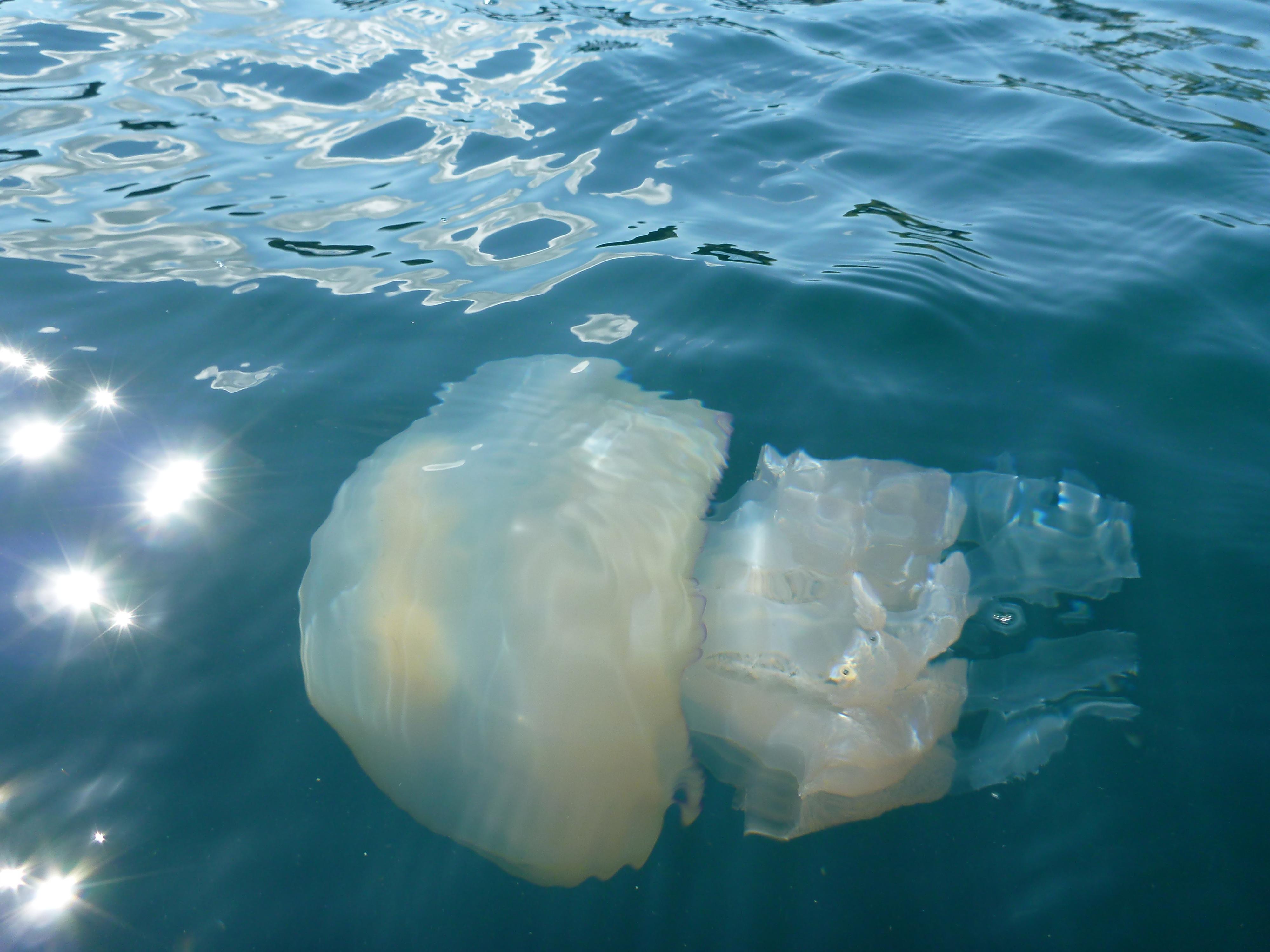
In addition there are a few other jellyfish-like creatures that are often seen whilst kayaking, and although similar in appearance these are not true jellyfish. Beroe comb jellies are the most common and do not possess stinging cells, instead they use specialized sticky cells and mucous to trap plankton from the water column. Each possesses eight rows of comb-like hairs or cilia along its body which beat to propel the comb jelly through the water. When these transparent combs catch the light they produce an undulating rainbow effect. Some like the sea gooseberry have long sticky tentacles that are extended to catch planktonic prey then reeled back towards the mouth where the catch is wiped off and swallowed! Beroe lacks tentacles but makes up for it with a big mouth, swallowing prey with a gulping action.
Sea gooseberry
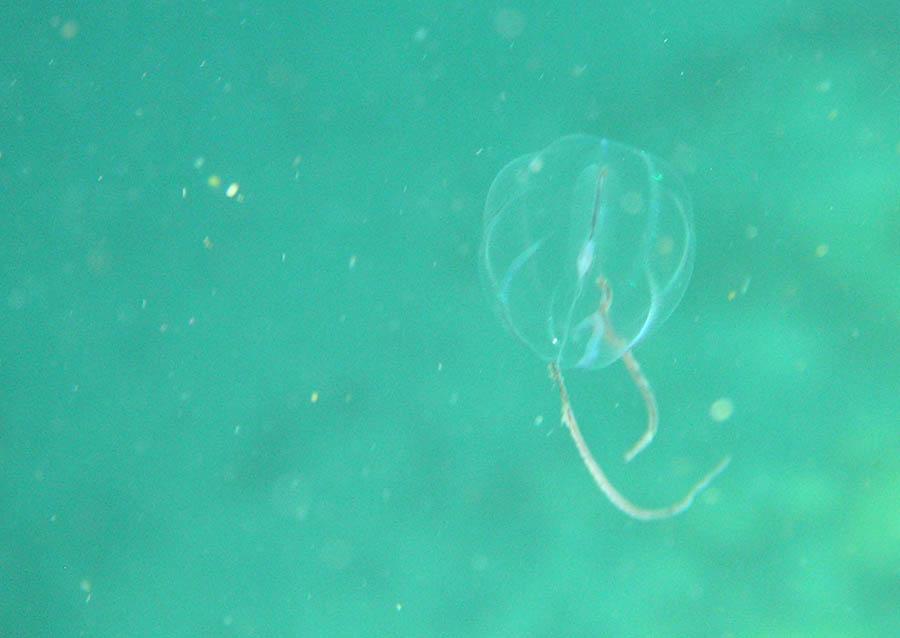
Beroe comb jelly

I always enjoy my seasonal sightings of jellies; most only live a few months before they die and disintegrate back to the ocean so get out there and spot some floaters for yourself.